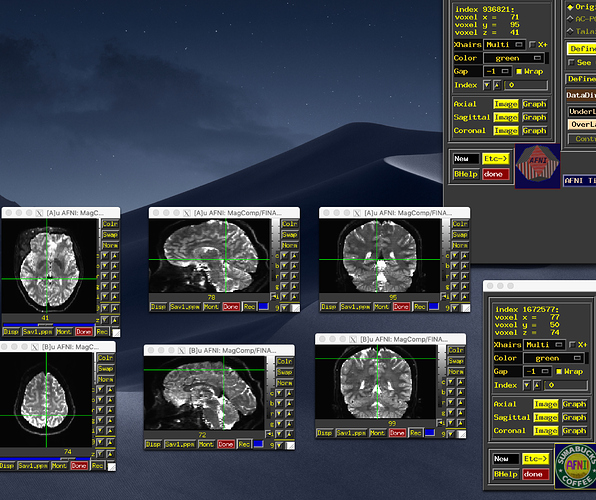Dear all,
so far, I found the following info very useful in trying to correctly interpret FSL bvec files
and I modeled my own scripts on how MRtrix3 handles them.
Unfortunately, I just came across an example in which my scripts exported a bvec file that led FSL 5.0.9 to estimate incorrectly oriented tensors. I tried converting the same DICOM input to FSL format using mrconvert (3.0_RC2-119-gbb9515db) and ran into the same problem. Conversion to .mif and estimating tensors with MRtrix worked fine. Conversion using Chris Rorden’s dcm2niiX version v1.0.20171215 produces output on which both FSL and MRtrix work correctly.
I noticed that, in this case, MRtrix3 and dcm2niiX created .nii files with different coordinate systems:
dcm2niiX:
srow_x 280 4 -2.205553 0.0 0.161747 119.956291
srow_y 296 4 -0.046578 2.118855 -0.628514 -91.637062
srow_z 312 4 0.155782 0.633525 2.102096 -10.426846
mrconvert:
srow_x 280 4 -2.205555 -0.0 0.161747 119.95649
srow_y 296 4 -0.046578 -2.118857 -0.628514 126.605217
srow_z 312 4 0.155782 -0.633526 2.102096 54.82629
Is this, by any chance, a known problem with a known solution?
Thanks / Thomas

